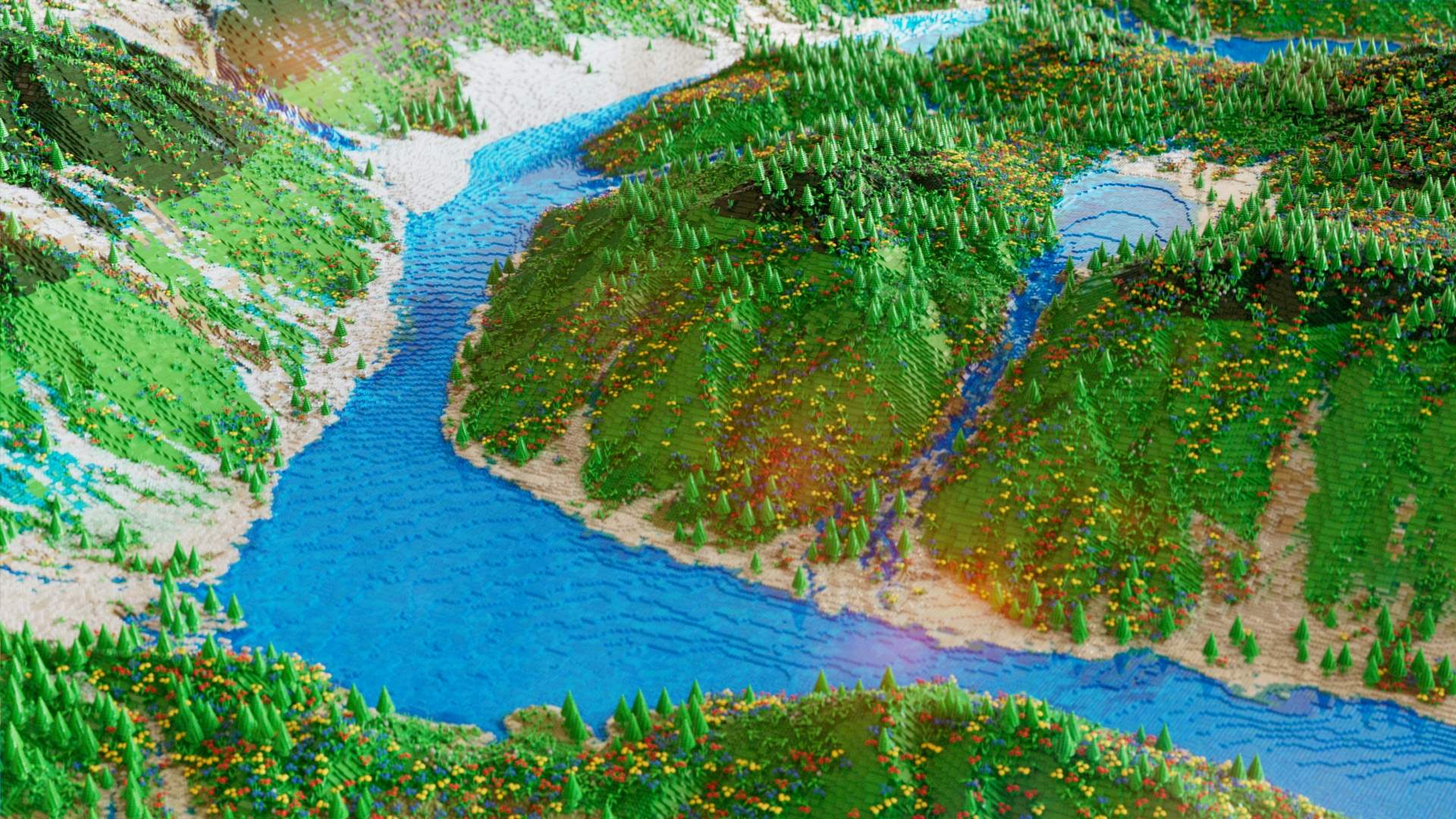Brickini Brickify
Overview
Brickini
Info
This separation allows to easily use your own brick geometry without modyfing Brickify engine itself. It also helps to keep your node network flexible. Adjustments to the sculpture generation is handled separately from the appearance of the individual bricks. It's for example possible to inject custom operations before bricks are actually instanced onto the generated point cloud.
Parameters
-
HollowInput geometry won't be filled with bricks. Only a shell is generated. -
OrientationAllows to specify orientation of bricks.- One Axis (X or Z) looks more organized and might be preferrable for man made structures or an ocean that goes in a certain direction because of wind.
- Random looks more organic and is more preferrable for landscapes or more sturdy structures.
-
Max Brick LengthLimits the length (in studs unit) -
SlopesEnables the use of slopes
-
WallsEnables the use of walls (bricks taller than one unit) -
Max Wall HeightLimits the height (in bricks unit) -
Randomize OrientationBy default Brickify tries to have walls with a width of 2, aligning it according to the flow of the wall. If enabled, it randomizes orientation resulting in a mix of walls that are 1 or 2 studs wide.
-
PlatesEnables the use of plates -
Force Plate on TopBrickify always aims for the least amount of bricks, therefore the surface might contain a mix of bricks and plates. However, if a smooth surface is desired, enabling this, asks Brickify to add an extra plate on top of a brick, which can then be turned into tiles with theTilesparameter.
Warning
Due to a limitation in the engine logic this option does not force a 100% coverage. Increasing Plate Layers (see below) can help to force a broader coverage of plates instead of bricks.
-
Max Plate LengthLimits the length (in studs unit) a plate can have -
Plate LayersAs soon as 3 plates would be layered, Brickify merges them into bricks. However this can sometimes result in unwanted gaps/holes in the sculpture. Increasing this parameter can help fill those holes. -
Mask PlatesBy default ifPlatesis enabled, there are used exclusively in favor of slopes. Enabling this reveals extra parameters (see below), that allow to control the distribution between plates and slopes -
InclinationThe distribution between plates and slopes is determined by angle. Gentle inclinations favor plates, while steeper inclinations are built with slopes. -
Inclination AngleThreshold for plate/slope ratio. Higher values mean more plate usage. -
Plates AttributeReads plates attribute. This allows to artistically paint - or procedurally generate with standard houdini tools where plates should be used instead of slopes.
Bug
Due to a limitation in the engine logic using the plate attribute can cause intersections between bricks
-
Pebbles AttributeReads pebbles attribute which replaces regular plates with round plates which can be used to create trails/dirt paths. -
TilesEnables the use of tiles. This replaces all plates with tiles by default.
Note
See Force Plate on Top and Plate Layers to get a better tiles coverage
Tiles AttributeOnly replaces plates with tiles according to tiles attribute.
WaterReads the following attributes: water and foam.- Water wherever water > 0
- Foam wherever foam > 0.5
Info
This inconsistent behaviour is for convenience. Foam can easily be created with a noise function which - by default - generates float values between 0-1 and therefore doesn't have to be remaped.
Water Max LengthLimits the length (in studs unit) water (transparent tiles) can have
-
Color Per Brick TypeRandom color per brick type which is mostly meant to be used for visulization/troubleshooting purposes. Disable to use point color of input geometry. -
Favor Color Over Brick SizeUsually Brickify attempts to use the biggest bricks possible, however that would result in a very crude color representation of an input model. Therefore, bricks are divided into smaller ones whenever the color of the input model dictates it. -
Restrict Color PaletteAutomatically converts the input color into the closest officially available Lego color.
Warning
The transformation math from input color to an official Lego color is not really satisfying at the moment. Until I find a better formula, the parameter below can be of good help.
Color PalettePresets for different color palettes.- Modern Colors: all colors available nowadays
- Modern Landscape Colors: all colors available nowadays that make sense for landscapes.
- 90s Colors: colors available in the 90s. This uses the old greys.
Tip
Due to the limitation mentioned above, sometimes unwated pink/purple colors can sneak into a sculpture. The Modern Landscape Colors palette is a handpicked selection of colors that usually make sense for landscapes and helps to avoid bad color transformations.
-
Time Freeze- Off: Default - Input can be animated
- On: Freezes input, forces a static brick generation
- Mask: Use freeze attribute to freeze certain parts of your input mesh
-
FrameSpecifies frame for time freeze
